IQAir HealthPro Plus Review
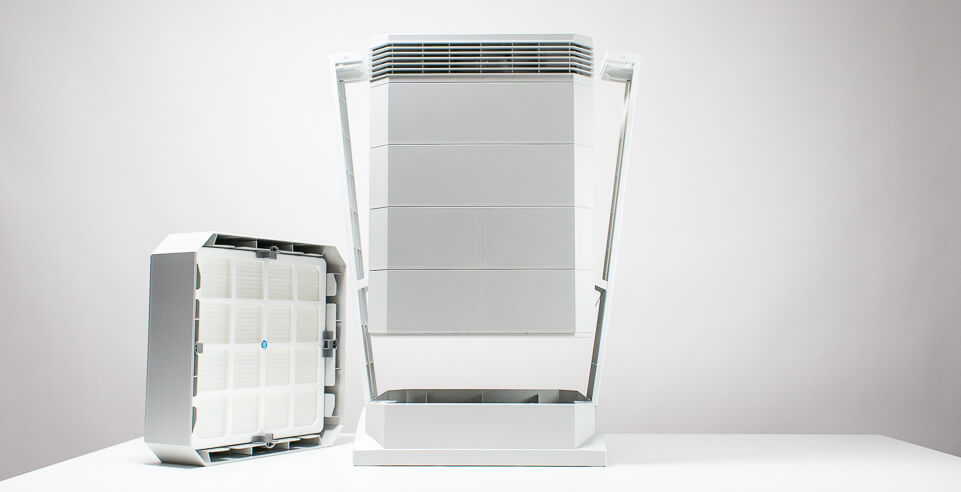
Feature Scores
Pros
- Substantial output - at around 300 CFM of output this unit has about 50 more CFM of air processing power than top rated 250 CFM units.
- High quality, substantial filters - all filters contain a lot of filter media. This means that you don’t have to replace filters on this unit nearly as often as you do on most other air purifiers on the market
- Great gas filtration - the 5 lb. of activated carbon and alumina contained in the unit’s gas filter is at least 4 to 5 times more gas filtration media than what is typical for gas filters in most other air purifiers on the market. This means that there’s at least a 4 to 5 times greater chance for gas adsorption each time a specific quantity of unwanted gas – odor, VOC – is processed by this unit. The end result is that this unit will remove unwanted gases faster and also remove unwanted gases longer (the greater quantity of adsorption media will take longer to saturate).
- Surprising portability for its size. Yes, this unit is larger and heavier than most other units on the market but as long as you don’t need to move it up or down any stairs it can easily be moved from room to room on casters.
- A great warranty – a 10 year warranty if you register the product with the manufacturer. Most other air purifiers on the market have a 3 to 5 year warranty at most.
Cons
- Price - at approx. $900 this unit is 4 to 6 times more expensive than top rated units
- Likely due to the thickness of its filters, this unit also has much worse energy efficiency than top rated units. On max. fan speed at around 300 CFM this unit draws well over 200 watts of power. Top rated units output at around 250 CFM on max. fan speed and draw well under 100 watts of power.
- On maximum fan speed this unit is also very noisy. On its highest fan speed it’s almost as if it hits an extra gear - air noise through the diffuser is substantial and almost hits a different pitch than it does on lower fan speeds.
Editor's Score
Quick Facts
| Particle filter type | HEPA (HyperHEPA® Filter H12/13 (L)) |
|---|---|
| Gas filter type | Carbon and alumina (V5-Cell™ Filter MG) |
| Pre-Filter | Essentially a lower grade particle filter (PreMax™ Filter F8 (S)) |
| Output | Approx. 300 CFM |
| Air Movement | 2x arches at bottom of unit > pre-filter > fan > V5-Cell > HEPA filter > top diffuser |
| Number of fan speeds | 6 fan speeds – the display reads out the respective output (CFM) for each fan speed |
| Size | 28 in. tall x 16 in. wide x 15 in. deep |
| Weight | 35 lb. |
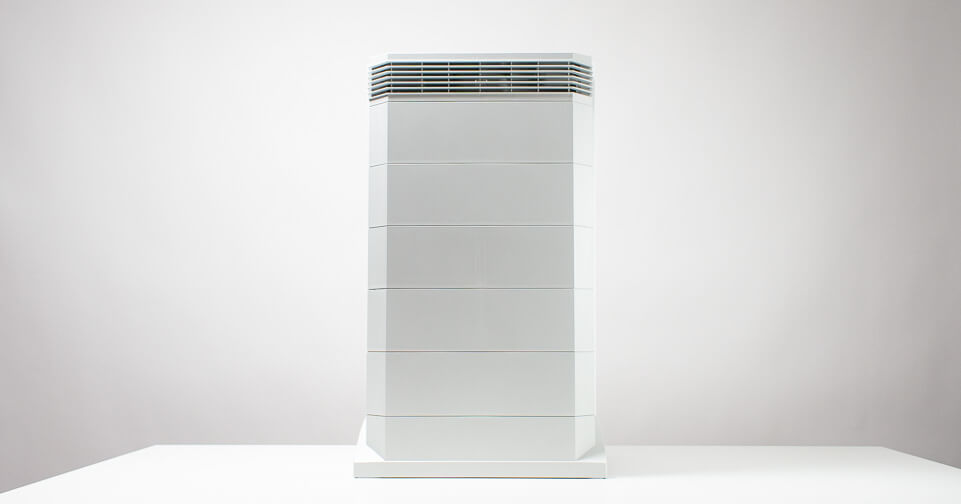








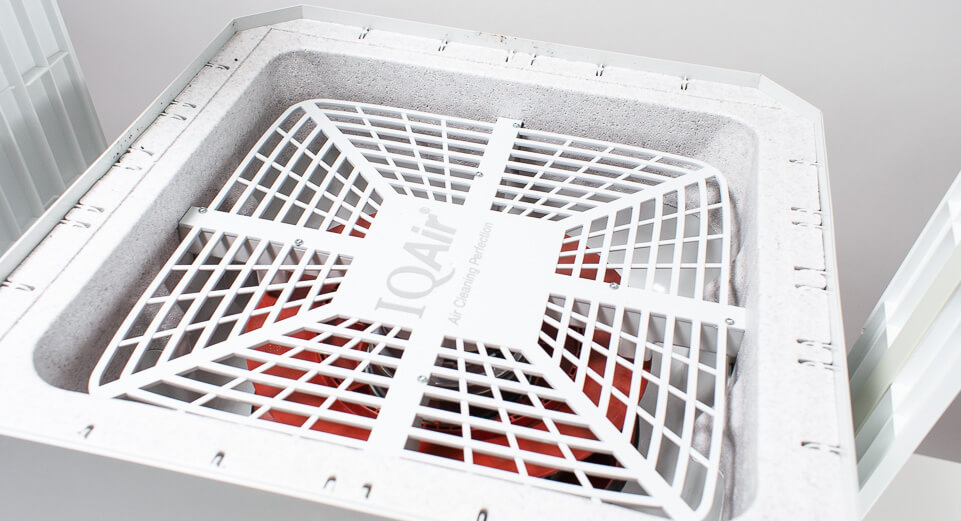




Analysis
A step by step breakdown of the HealthPro Plus's performance.
Air Processing Performance
Test Results
In a 150 sq. ft. test environment, the IQAir HealthPro Plus took 9 minutes to lower room particle concentration from a starting concentration of 10,000 particles per cubic ft. – relatively dirty air – down to an ending concentration of 1,000 particles per cubic ft. – relatively clean air.
This result was both expected and unexpected. It was expected in that this unit garnered very similar results in this test to units with similar output (CFM). The HealthPro Plus processes about 300 cubic ft. per minute (300 CFM) on its highest fan speed (used in our test). Top rated units like the Coway Mighty and Winix 5500-2 output at approx. 250 CFM – only about 50 CFM less than the IQAir. The Mighty took 10 minutes in the same test and the Winix took just as long as the IQAir – 9 minutes.
Lower output units took longer. The approx. 110 CFM Honeywell HPA100, for example, took 22 minutes. Higher output units were faster. The approx. 430 CFM Coway AirMega 400s took only 4 minutes.
The unexpected part of this result has to do with the IQAir’s superior filtration. Its primary particle filter – its “HyperHEPA” filter – is thicker and contains more filtration media than most other particle filters on the market. Its pre-filter – its “PreMax” filter – is also much thicker and more substantial than the pre-filters installed in most other air purifiers on the market.
Nonetheless, the IQAir took just as long as the Winix 5500-2 and was only slightly faster than the Coway Mighty in our particle removal test. And both the Winix and the Coway have much less substantial pre-filters and particle filters than the IQAir.
The takeaway here is that the IQAir’s output – its air processing power measured in cubic ft. per minute (CFM) – was the primary driver behind its performance in our testing. Its apparently superior gas filtration was not. We will explain why this was the case in the upcoming section on “filter analysis”.
Before we get there, we first need to discuss the second part of our particle testing. It involved allowing the air purifier to continue to run in the test environment to see just how low of a room particle concentration it was able to achieve.
Recall that we ended the initial testing at 1,000 particles per cubic ft. The second part of our testing involved allowing the air purifier to continue to run to see if it could achieve a concentration lower than 1,000 particles per cubic ft. Note that our testing equipment only allowed us to measure as low as 100 particles per cubic ft. Thus, 100 particles per cubic ft. is as good of a result as was possible for all of the air purifiers we tested.
After its initial 9 minutes of run time (to lower room particle concentration from 10,000 down to 1,000 particles per cubic ft.) the IQAir took an additional 18 minutes to lower room particle concentration even further down to 100 particles per cubic ft. – as low of a concentration as we were able to measure.
Most high output units we tested garnered a similar result. The aforementioned Coway Mighty and Winix 5500-2 both were also able to achieve an ultra low room particle concentration of 100 particles per cubic ft. given additional run time.
Buget priced low output units generally could not achieve this low of a room particle concentration. The Honeywell HPA100 could only get the concentration down to 900 particles per cubic ft. The ever popular GermGuardian AC4825 could only get it down to 500 particles per cubic ft. Note that in each case the unit was given an indefinite amount of time to achieve as low of a concentration as possible.
Filter Analysis
Particle Filter
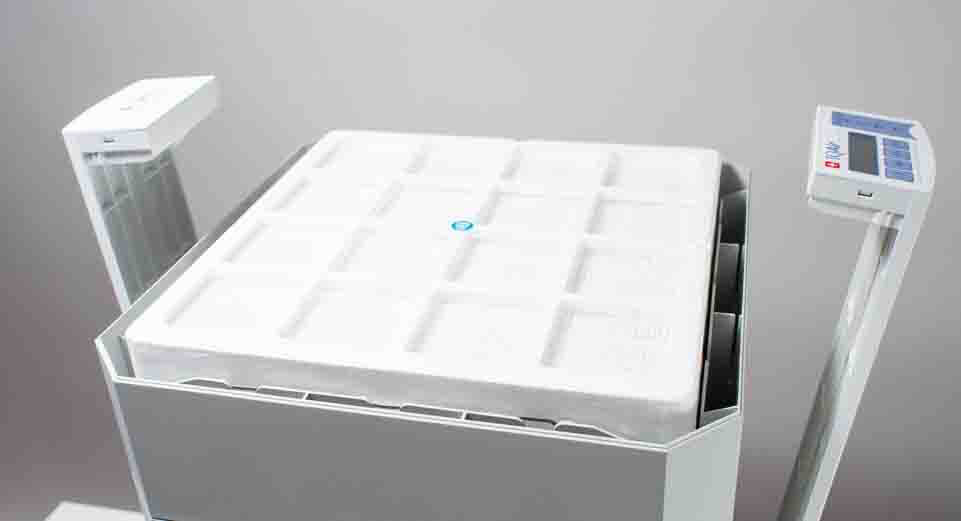
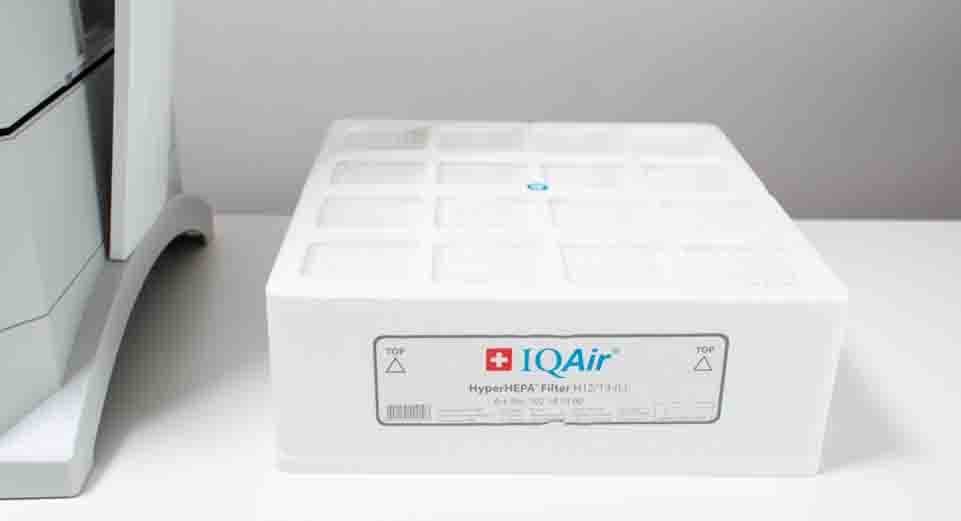
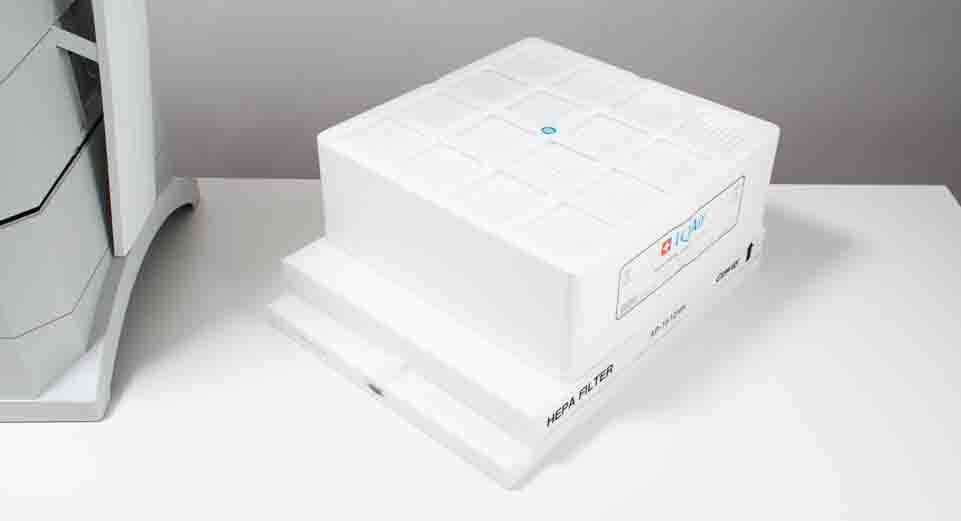
Most standard air purifiers are equipped with a fibrous particle filter for removing particles like dust, pollen, smoke, etc. Most are equipped with a HEPA filter for this purpose. The IQAir is no different.
Its “HyperHEPA” filter has the exact same efficiency as a HEPA filter – 99.97%. In other words, a standard HEPA filter and the IQAir’s HyperHepa filter both remove 9,997 of every 10,000 particles that travel through them.
The IQAir’s HEPA filter is thicker and contains more filtration media (fibers) than a standard HEPA filter but it doesn’t remove particles any better. This was confirmed in our particle testing – in which the IQAir took just as long as the Winix 5500-2 and was only about a minute faster than the Coway Mighty in removing particles in our test environment. The HEPA filter inside the Winix and Coway is about 1 inch thick. The HEPA filter inside the IQAir is more than 4 inches thick. These filters exhibited identical performance in our testing because they have the exact same efficiency rating of 99.97%.
So, if the IQAir’s thicker HEPA filter doesn’t remove particles any better, why is it thicker? The answer: filter longevity. Because they contain much less filtration media, the Winix and Coway’s HEPA filters have to be replaced much more frequently. The IQAir’s HEPA filter contains a lot of filtration media which takes much longer to saturate with particles, and therefore requires much less frequent replacement. This is the only clear advantage the HyperHEPA filter has over a standard HEPA filter.
Unfortunately, this one advantage becomes much less of an advantage when you consider filter replacement costs. The Winix or Coway’s HEPA filter costs about $40 to $60 to replace (as part of a complete filter set). The IQAir’s HEPA filter costs about $360 (as part of a filter set).
Gas Filter
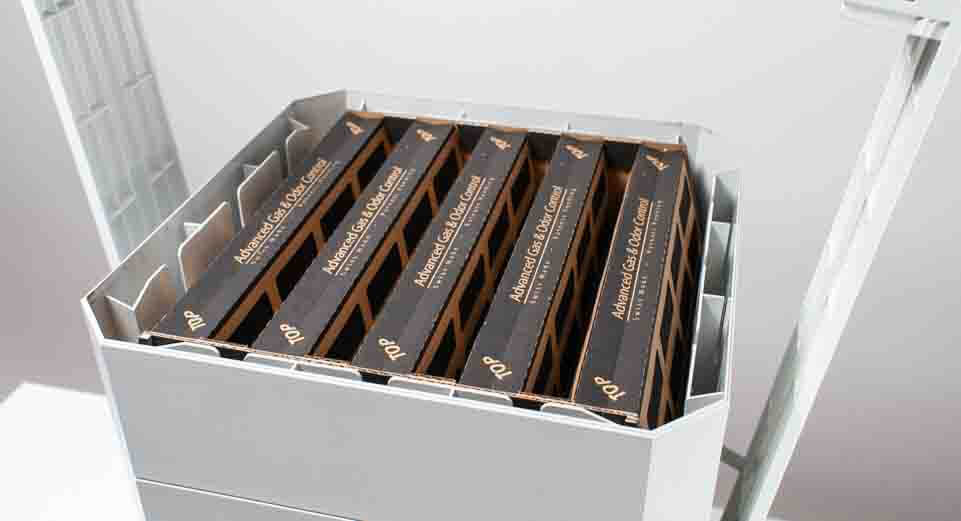
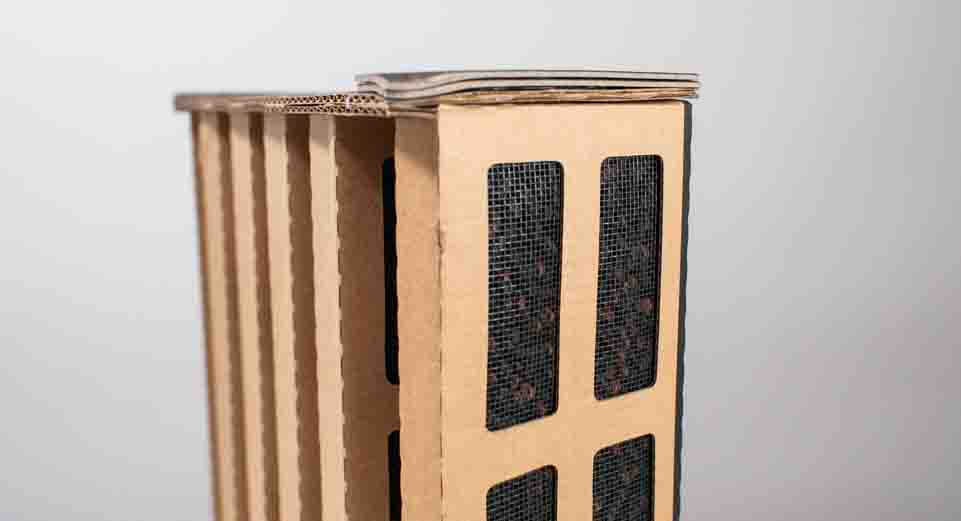
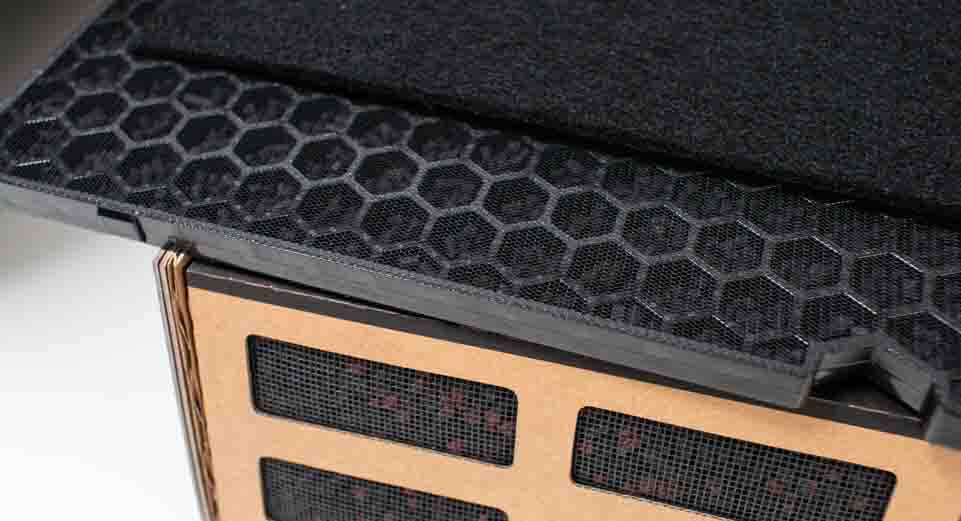
Most air purifiers on the market offer fairly poor gas filtration. Even the Coway Mighty is equipped with a fibrous filter that is only coated with carbon. The Winix 5500-2’s carbon filter is a little bit better – it contains actual carbon pellets, but not that many.
The IQAir’s gas filter, called the “V5-Cell” by the manufacturer, contains carbon pellets, a lot of carbon pellets, and alumina. We estimate that it contains about 4 to 5 times the gas filtration media (carbon pellets) as what is contained in the Winix 5500-2’s gas filter.
Why is this important? Let us explain.
A particle filter (e.g. a HEPA filter) removes particles through a physical process. Particles get “stuck” on fibers in the filter.
A gas filter removes unwanted gases (like VOCs and odors) through a chemical process. Gases chemically bond to the gas filtration media (eg. a particular odor chemical bonds to carbon or alumina).
The IQAir’s gas filter contains actual carbon pellets – this increases the surface area for bonding sites (as compared to a fibrous filter that’s only coated with carbon). It contains a lot of carbon pellets – this further increases the surface area for bonding sites. It also contains alumina – this provides an additional chemical for certain gases to bond to that would otherwise not bond to anything (because they don’t bond to carbon).
The bottom line here is that if gas filtration is a priority for you, the IQAir HealthPro Plus is an excellent choice, as long as its equipped with the V5-Cell (some submodels do not contain this filter).
Pre-filter
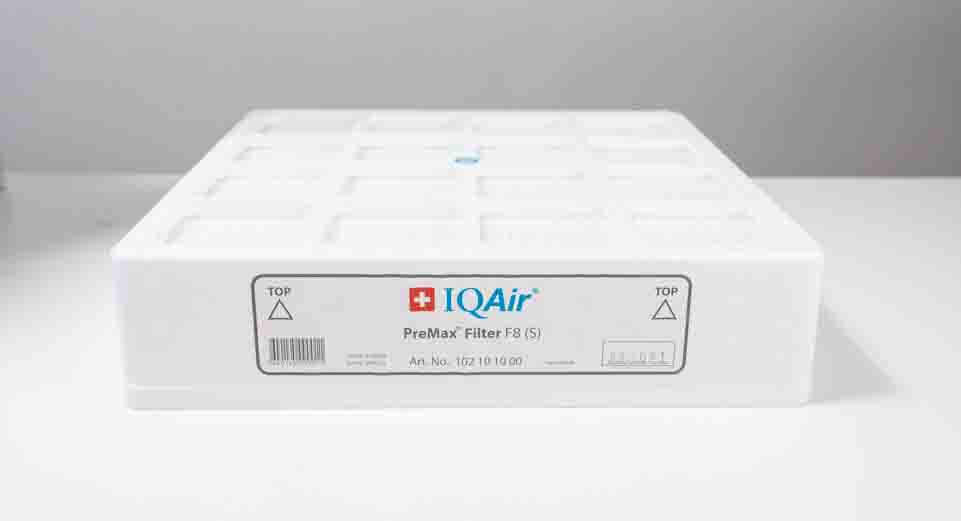
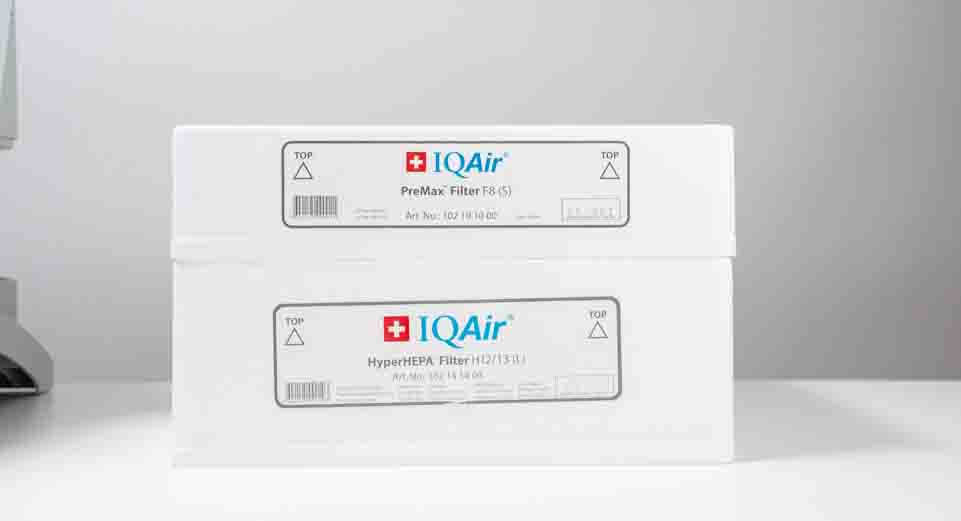
Budget air purifiers use their fibrous carbon filter as a pre-filter. Larger particles and fibers stick to the carbon filter instead of the unit’s HEPA filter. When the pre-filter (carbon filter) saturates with these particles it has to be replaced at cost.
More expensive options have a separate washable pre-filter. The Coway Mighty and Winix 5500-2 fall into this category. Both units have a mesh pre-filter. When this type of pre-filter saturates with large particles it can be vacuumed or rinsed for free.
The IQAir HealthPro Plus contains a separate non-washable pre-filter. Its pre-filter is much more substantial than the thin mesh pre-filter inside the Coway and Winix. In many ways, the IQAir’s pre-filter resembles a standard particle filter. It doesn’t offer the same level of efficiency as a full blown HEPA filter but it definitely removes more particles and smaller particles than the mesh pre-filter inside the Coway and Winix.
The downside to this superior level of filtration is that the filter cannot be washed. It has to be replaced, at cost. And the truth is that while its superior level of filtration increases the lifespan of the unit’s HEPA filter, it doesn’t improve the filtration quality of the air purifier as a whole.
Remember, the last line of defense for any particle is the unit’s HEPA filter. This is true inside the IQAir and it’s also true inside any other air purifier, including top rated units like the Coway and Winix. Yes, certain particles traveling through the IQAir will get stopped at its pre-filter while those same types of particles won’t be stopped by the pre-filter inside the Coway or Winix. But, in the latter scenario there’s always the last line of defense – the unit’s HEPA filter. So any particle that makes it through the Coway or Winix’s pre-filter will be captured by its HEPA filter.
The bottom line is that the air that exits out of the IQAir, Coway, or Winix is equally “clean” because all three units have exactly the same type of final ultra-fine particle filter with exactly the same level of efficiency – a HEPA filter. Pre-filter quality only affects how quickly the HEPA filter saturates with larger particles - not final air quality.
Air Movement
The HealthPro Plus processes about 300 cubic ft. of air per minute (300 CFM). This makes it a viable option for rooms up to about 300 sq. ft.
We make this same recommendation for approx. 250 CFM units – that they can be used in rooms up to 300 sq. ft.
We make this same recommendation, despite the 50 CFM difference, for two reasons:
1. A 50 CFM difference is minimal in terms of its overall impact on area of coverage.
2. We generally don’t recommend a single air purifier for rooms larger than 300 sq. ft. Even the approx. 430 CFM Coway AirMega 400 is only recommended for rooms up to 300 sq. ft. because it is still a single air purifier representing a single location in the room where dirty air is taken in and clean air is put back into the room. Our testing showed that two lower CFM units are much more effective in a large room than a single high CFM unit.
Energy Efficiency
The HealthPro Plus is one of the most power-hungry air purifiers on the market. Most air purifiers draw between 10 and 80 watts of power, depending on fan speed. The HealthPro Plus draws 233 watts of power on max. fan speed. With an output of approx. 300 CFM this gives it a CFM/watt ratio of 1.3 on max. fan speed – meaning that it only gives 1.3 CFM for every watt of power usage.
For comparison, the Winix 5500-2, one of the most energy efficient air purifiers on the market, draws 54.8 watts of power on max. fan speed. With an output of approx. 250 CFM this gives it a CFM/watt ratio of 4.6 – more than 3 times the 1.3 of the IQAir. This means that the Winix is more than 3 times more energy efficient than the IQAir on max. fan speed.
Things don’t get much better for the IQAir on lower fan speeds. On its lowest fan speed, power draw is reduced all the way down to 23.2 watts. Taking into account its lower output on this fan speed gives it a CFM/watt ratio of 1.7 on low.
For comparison, the Winix draws only 5.5 watts on low. Taking into account its lower output on low fan speed gives it a CFM/watt ratio of 11.9 on low. This means that the Winix is more than 5 times more energy efficient than the IQAir on low.
You may be asking: why is the IQAir so energy inefficient? The answer: its thick filters.
Recall that this unit has a very thick HEPA filter, a very thick pre-filter, and a substantial gas filter containing about 5 lb. of gas filtration media (carbon and alumina). The Winix (and most other air purifiers on the market) has a much thinner HEPA filter, a much thinner pre-filter, and a much less substantial gas filter.
The primary component that draws most of the power inside of an air purifier is its fan (hence why power draw changes according to fan speed). The fan inside the IQAir has to work much harder than the fan inside a standard air purifier because it has to push the air through a lot more filter media. This translates into more power draw. Additional power draw at a similar output (as its competitors) translates into poor energy efficiency.
Noise Output
The HealthPro Plus is also one of the noisier air purifiers we tested, especially on higher fan speeds. On high, it was measured at 72.2 dB. For comparison, most other air purifiers were measured in the 60 to 68 dB range on the same fan speed. The Winix 5500-2, for example, was measured at 67.5 dB on its highest fan speed.
An approximate 5 dB difference may not look like much but it’s quite substantial, in practice. The IQAir sounds much louder on high fan speed compared to most other air purifiers we tested. In addition to its overall loudness, there’s also a distinct higher pitch sound emanating from its top diffuser on high fan speed.
The bottom line: this unit makes a lot of noise on maximum fan speed – much more than most other units on the market.
The good news is that the HealthPro Plus does feature 6 different fan speeds. It’s only on speed 6 that it’s exceptionally loud. On lower fan speeds noise output (and overall output) is dramatically reduced. The unit was measured at 65.2 dB on medium (speed 3) and 40 dB on low (speed 1). For comparison, most other units on the market have a noise output in the 50 to 60 dB range on medium and in the low 40s on low.
Durability
The HealthPro Plus is definitely one of the most durable air purifiers we tested – unsurprising, considering this unit is made in Switzerland (most other air purifiers are made in China).
All of the parts comprising the air purifier are of a very high quality. Build quality is exceptional. Our only complaint involves the two “arms” that extend away from the unit during maintenance. These two “arms” violently snap out of and into place when you replace the unit’s filters. If you pull/push too hard on these “arms” it certainly feels like something (a part of the arms or surrounding plastic pieces) can possibly break over time with continued use. We only say this because of the sheer force required to pull/push the “arms” out of/into the main assembly.
All of that being said, chances are that this is more of a “feeling” for us than actual reality. The unit does come with a 10 year warranty (if the air purifier is registered with the manufacturer) which would make repairing any issues associated with pulling/pushing these “arms” very expensive for the manufacture, if this was a real issue.
Compared to most other air purifiers on the market, we can confidently say that the IQAir is more well made with higher quality parts. It also boasts a 10 year warranty while most other air purifiers on the market come with a 5 year warranty at most.
Ease of Use
Unlike most other air purifiers on the market, the HealthPro Plus features a single LCD display with a full featured menu for adjusting settings. This display is not backlit. This means that it won’t bother you at night (it won’t light up a dark room) but you won’t be able to easily adjust settings without an external light (daylight in the daytime or a light at night) shining on the display.
In addition to this LCD display there are several LEDs around the display that light up to show different settings. A super small red LED in the bottom corner lights up to show the unit is plugged in (on standby) when its powered off. There are three filter lights that show the status of each of the filters (lifespan remaining). There are four lights that pulsate at different speeds depending on the current fan speed selected (pulsating faster for higher fan speeds). None of these lights can be turned off.
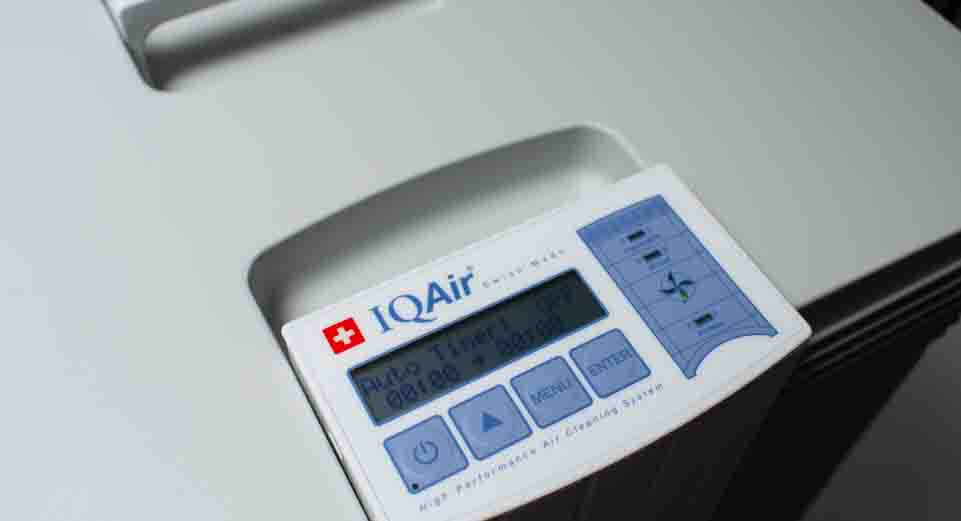
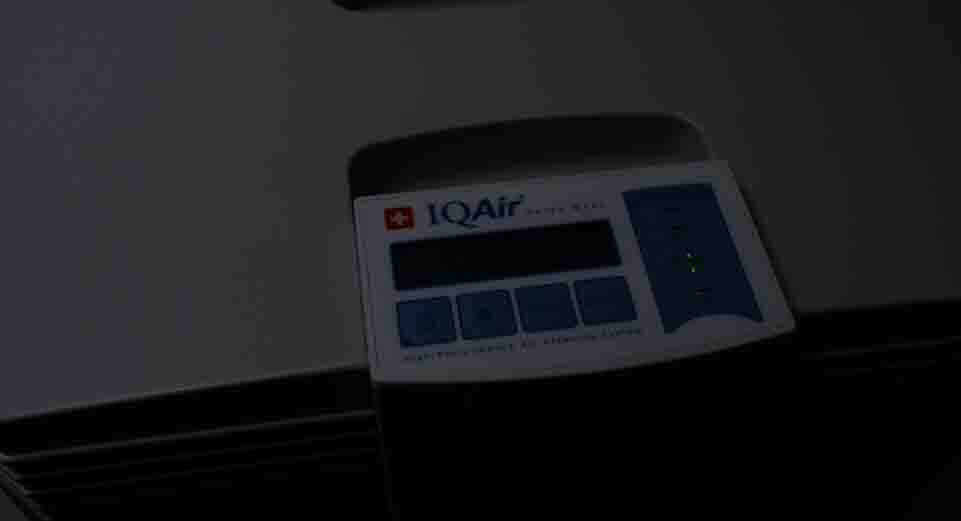
The HealthPro Plus is definitely one of the larger and heavier air purifiers on the market. The unit is about 28 inches tall, and approx. 15 to 16 inches wide and deep. It weighs a whopping 35 lb. Picking it up by its top handle is cumbersome because of its large size and substantial weight. Thankfully, the unit does come with a set of four wheels (casters) that can be installed on the bottom of the air purifier. Once installed, it’s much easier to move the unit between rooms (by pushing it instead of picking it up).
For comparison, top rated units like the Winix 5500-2 and Coway Mighty are 24 and 17 inches tall, respectively. They weigh 16.5 and 12.5 lb. respectively. Either unit is much easier to pick up than the IQAir, although neither unit comes with wheels that allow you to push it between rooms.
The HealthPro Plus doesn’t have nearly as many features as you think it might have for a unit at its price point. It does have an extensive timer and it does come with a remote, but otherwise it lacks many of the features you find on much less expensive options.
Both the Winix 5500-2 and Coway Mighty come with several auto modes, a corresponding built-in air quality sensor, and an ionization mode. The IQAir comes with none of these features.
Is this a problem? Not really. The built-in air quality sensor on these units is of a very low quality. Auto modes are hit or miss in terms of working properly. And ionization generates ozone – thus, we don’t advise that you use the ionization mode on these units anyway.
The bottom line: yes, the IQAir lacks many features found on less expensive options but most of these features are “nice to have” at best and potentially dangerous (in the case of ozone generation) at worst.
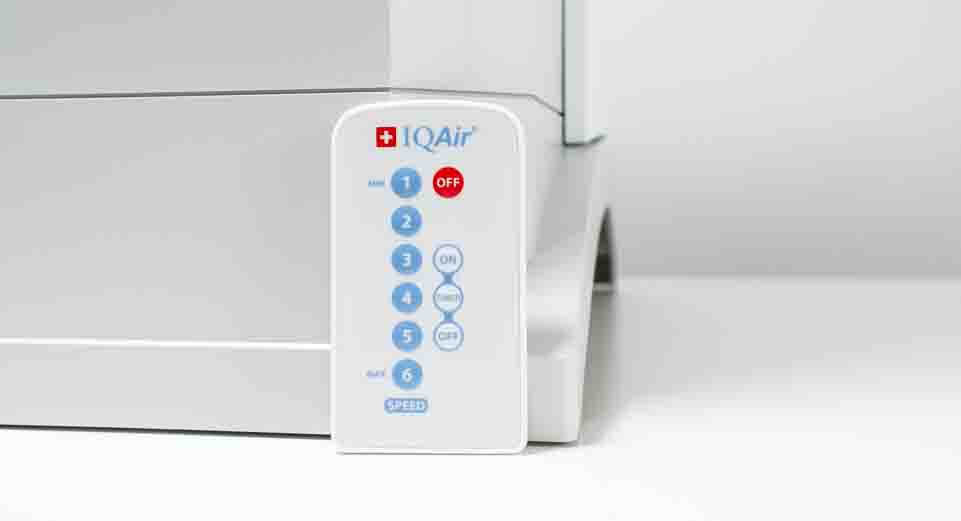
Value
To put it bluntly, the HealthPro Plus simply isn’t a good value.
First of all, it’s very expensive: it retails for approx. $900. The Winix 5500-2 retails for approx. $150. It has very similar output to the IQAir (250 CFM vs 300 CFM in the IQAir) and provides very similar particle filtration quality (both units have HEPA filters). The IQAir does provide better gas filtration but this is really its only advantage. Is that worth a $750 price difference? We don’t think so. Not for most users.
Second, the HealthPro Plus is highly energy inefficient. It draws more than 3 times as much power as the Winix 5500-2 on high fan speed. This means that it costs more than 3 times as much in power costs to run the IQAir compared to the Winix.
Finally, we need to discuss filter replacement costs. A full filter replacement set for the IQAir costs about $360. This sounds like a lot and it definitely is but consider that you won’t need to replace this unit’s filters nearly as often as you need to replace the filters on most other air purifiers, including the Winix 5500-2. We estimate that the filters on the IQAir will last about four times longer than the filters on the Winix, all other things being equal (same size space, same air conditions, same fan speed, etc.).
Let’s say you need to replace the filters on the Winix once a year. Filter costs for the Winix are in the $50 to $60 range. This translates into a yearly filter replacement cost of $50 to $60 for the Winix. The IQAir’s filters last 4 times as long so if the Winix’s filters last a year in a particular environment the IQAir’s filters will last 4 years. This translates into a yearly filter replacement cost of $90 (360/4 = 90).
$90 is much less than $360 but it’s still much more than $50 to $60 for the Winix, granted you do get better gas filtration with the IQAir.
All in all, the IQAir is expensive to buy (approx. $900), expensive to run (high energy costs), and expensive to maintain (high filter replacement costs). It is not a good value air purifier.
Verdict
Our bottom line recommendations.
The IQAir is made in Switzerland, comes with a 10 year warranty, and is definitely one of the most durable air purifiers on the market. If these are enough reasons to sway you into a purchase then by all means, go for it.
But what if your primary concern is air filtration? We showed earlier how a much less expensive option like the Winix 5500-2 does everything the IQAir does almost as well for a fraction of the price. Everything, that is, except gas filtration.
So, is the IQAir worth approx. $900 for gas filtration alone? What other options do you have if gas filtration is a priority for you?
Enter the Austin HealthMate.
The HealthMate retails for about $500 – almost half as much as the IQAir.
The HealthMate outputs at about 250 CFM – so only about 50 CFM less than the IQAir.
Here’s where things get interesting:
The HealthMate has about three times as much gas filtration media as the IQAir.
Recall that the IQair V5-Cell contains about 5 lb. of activated carbon and alumina. The HealthMate contains 15 lb. of activated carbon and zeolite. Again, that’s three times more gas filtration media, meaning that the HealthMate has the ability to remove unwanted gases three times faster than the IQAir and its filter will also take three times longer to saturate before you have to replace it.
The bottom line here is that what is perhaps the IQAir’s greatest asset – its ability to filter gases – is done more effectively by another air purifier almost half its price. The HealthMate is also more energy efficient and less noisy, although the IQAir does have the much longer warranty - 10 years compared to 5 for the Austin.
All in all, we would recommend the Austin Air HealthMate over the IQAir HealthPro Plus to anyone that is especially concerned about getting the best unwanted gas filtration possible and doesn’t mind spending more to do so.
If your primary concern is particle filtration – that is to say filtering out things like allergens and dust – a much cheaper top rated unit like the Winix 5500-2 is our recommendation.
Add a Comment
Have a question or comment? Let us know below.

Comments (4)
I have two cleanroom h13. One failed just short of the warranty end. Iquair sent a totally new unit and covered the return shipping for the old unit. They have provided filtration since 2003.
Hi I am not sure if you are working for Winx or not. But I have never seen such negative comments about the top of the line IQ Air. You have definitely have looked at the the pros and the cons of the IQ Air. But you have seemed to disregard every positive aspect of the larger unit. In fact, when you mention the size of the particle filters of the IQAir, you have made it a very negative aspect. Instead of saying the larger filter which has better filter surface area is far superior to the Winix and Conrad filters. The IQAir is definitely the superior product. Instead of saying the superior construction of the IQ Air that’s made in Switzerland is the better purifier it seems like the much cheaper China built models are better. It appears that quality, construction, longevity of the IQ Air filters really doesn’t matter to you. Even though replacing the IQ Air filters less often the other brands are still better and you replace them way more often.
I owned the Winix and it’s a decent unit but I also have the IQ Air and it is clearly in my opinion the most superior unit hands down. The Winix never helped my asthma but the IQ Air has helped enormously. Thank you for your dedication to your continued in depth reviews to air purifiers
You don’t mention that this IQAir air purifier filters down to an amazing .003 microns compared to your two favourite which go down to .3 microns. I also see the Blueair filters down to .1 microns even those it’s non-Hepa filter is only 99% efficient.
Can you please help us understand how different purifiers have different micron filtering rates and how this relates or doesn’t relate to Hepa filter efficiency which seems to describe number of particles it lets through not size of particle it lets through.
Thanks
HEPA filters also filter particles smaller than 0.3 microns. I talk about this topic in-depth in this guide.
Do all the filters in the IQAir need replacement at the same time, or does the HEPA filter need replacement before the gas filter? What are the procedures that determine when a filter needs replacement? Airflow throughput? Capture ratio (ability of filter to capture gas or particle going through the filter )?
Filter replacement time depends on usage. If you use the air purifier in an environment with a high particle concentration the particle (HEPA) filter will saturate quicker. If you use it in an environment with a lot of odors/VOCs the gas filter will saturate quicker.
The best way to determine when to replace the particle filter is to use a high quality particle meter like the Dylos DC100 to monitor particle concentration in the room where you're using the air purifier. When the air purifier doesn't lower particle concentration as quickly and/or keep it as low as it usually does (according to the monitor) it's time to replace the unit's particle filter. The best way to determine when to replace the gas filter is to observe how well the air purifier removes odors. When you notice (start smelling) that the unit isn't removing odors as quickly it's time to replace the gas filter.